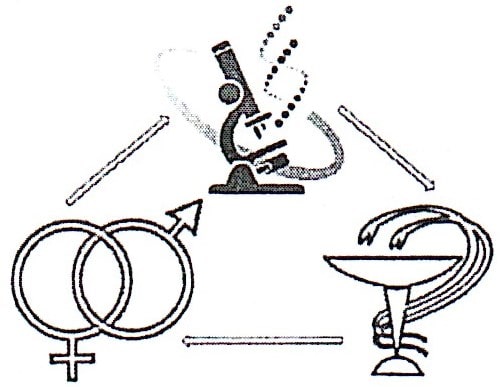Порівняльна характеристика ефективності двох методів стабілізації крижово-клубового суглобу у собак
Анотація
Нестабільність крижово-клубового суглоба (ККС) – це термін, що застосовується для опису больового синдрому та іншими патологічними явищами у ділянці або навколо крижа та крил клубових кісток, пов'язаними з відхиленням, патологічною рухливістю або недостатньою стабілізацією його складових. За клінічним проявом нестабільність крижово-клубового суглобу має велику схожість із низкою ортопедичних та неврологічних патологій. Тому необхідно проводити диференційну діагностику патологій схожих за клінічним проявом. Загальноприйнятим методом хірургічного лікування даної патології являється «відкритий метод», для виконання якого потребується візуалізація суглобових поверхонь клубової та крижової кістки, що в свою чергу супроводжується значною травматизацією тканин та розсіченням капсули суглоба. Альтернативною методикою лікування є терапевтичне лікування, яке включає в себе утримання в клітці тварини 4-6 тижнів та прийомі нестероїдних протизапальних препаратів. Задачею нашого дослідження було запропонувати метод хірургічного лікування який супроводжується істотно меншим травмуванням тканин пацієнта та порівняти його із загальноприйнятим методом хірургічного лікування, спираючись на клінічну оцінку стану тварин в післяопераційний період й фіксації терміну одужання пацієнтів після проведення обох способів фіксації крижово-клубового суглоба. В результаті досліджень виявлено, що закритий метод фіксації крижово-клубового суглоба із використанням канульованого гвинта під рентгеноскопічним наглядом є більш ефективним в порівнянні із відкритим методом фіксації. В результаті модифікації методики оперативного втручання покращується післяопераційний стан пацієнта та прискорюється період відновлення функції локомоторного апарату, і скорочується термін лікування тварини.
Завантаження
Посилання
Baskin, K., Cahill, A., Kaye, R. (2004). Closed reduction with CT-guided screw fixation for unstable sacroiliac joint fracture-dislocation. Pediatric Radiology, 34, 963-969. https://doi.org/10.1007/s00247-004-1291-8
Burger, M., Forterre, F., Waibl H. (2005). Sacroiliac luxation in the cat. Part 2: cases and results. Kleintierpraxis, 50, 287-297. https://doi.org/10.3415/VCOT-11-05-0074
Cher, D., Frasco, M., Arnold, R. (2016). Cost-effectiveness of minimally invasive sacroiliac joint fusion. ClinicoEconomics and Outcomes Research, 18, 1–14. https://doi.org/10.2147/CEOR.S107803
DeCamp, C., & Braden, T. (1985) The surgical anatomy of the canine sacrum for lag screw fixation of the sacroiliac joint. Veterinary Surgery, 14, 131–134. https://doi.org/10.1111/j.1532-950X.1985.tb00841.x
DeCamp, C., Johnston, S., & Déjardin, L. (2016). Fractures of the pelvis. In: Brinker, Piermattei, and Flo’s Handbook of Small Animal Orthopedics and Fracture Repair. 5th ed. St. Louis: Elsevier, 437–467.
Déjardin, L., Marturello, D., Guiot, L., Guillou, R., & DeCamp, C. (2016). Comparison of open reduction versus minimally invasive surgical approaches on screw position in canine sacroiliac lag-screw fixation. Veterinary and Comparative Orthopedics and Traumatology, 29 (04), 290-297 https://doi:10.3415/VCOT-16-02-0030.
Heiney, J., Capobianco, R., & Cher, D. (2015). A systematic review of minimally invasive sacroiliac joint fusion utilizing a lateral trans articular technique. International Journal of Spine Surgery, 9, 1–16. https://doi.org/10.14444/2040
Johnson, K. (2014) Approach to the wing of the ilium and dorsal aspect of the sacrum. In: Piermattei’s Atlas of Surgical Approaches to the Bones and Joints of the Dog and Cat. 5th ed. St. Louis: Elsevier, 312–315.
Joseph, R., Milgram, J., & Zhan, K. (2006). In vitro study of the ilial anatomic landmarks for safe implant insertion in the first sacral vertebra of the intact canine sacroiliac joint. Veterinary Surgery. 35, 510-517. https://doi.org/10.1111/j.1532-950X.2006.00184.x
Ledonio, C., Polly, D., & Swiontkowski, M. (2014). Minimally invasive versus open sacroiliac joint fusion: are they similarly safe and effective? Clinical Orthopaedics and Related Research. 472, 1831–1838. https://doi.org/10.1007/s11999-014-3499-8
Lee, M., Kim, S., & Lee, S. (2007). Overcoming artifacts from metallic orthopedic implants at high fieldstrength MR imaging and multi-detector CT. Radiographics, 27, 791–803. https://doi.org/10.1148/rg.273065087
Lindsey, D., Perez-Orribo, L., & Rodriquez-Martinez, N. (2014). Evaluation of a minimally invasive procedure for sacroiliac joint fusion - an in vitro biomechanical analysis of initial and cycled properties. Medical Devices: Evidence and Research, 7, 131–137. http://dx.doi.org/10.2147/MDER.S63499.
Pieske, O., Landersdorfer, C., & Trumm, C. (2015). CTguided sacroiliac percutaneous screw placement in unstable posterior pelvic ring injuries: accuracy of screw position, injury reduction and complications in 71 patients with 136 screws. Injury, 46, 333–339. https://doi.org/10.1016/j.injury.2014.11.009
Sciulli, R., Daffner, R., & Altman, D. (2007). CTguided iliosacral screw placement: technique and clinical experience. American Journal of Roentgenology, 188, 181-192. https://doi.org/10.2214/ajr.05.0479
Smith, A., Capobianco, R., & Cher, D. (2013). Open versus minimally invasive sacroiliac joint fusion: a multi-center comparison of perioperative measures and clinical outcomes. Annals of Surgical Innovation and Research, 7, 1–12. https://doi.org/10.1186/1750-1164-7-12
Tonetti, J., Carrat, L., & Lavalleé, S. (1998). Percutaneous iliosacral screw placement using image guided techniques. Clinical Orthopaedics and Related Research, 354, 103–110.
Tonks, C., Tomlinson J., & Cook J. (2008). Evaluation of closed reduction and screw fixation in lag fashion of sacroiliac fracture-luxations. Veterinary Surgery, 37, 603–607. https://doi.org/10.1111/j.1532-950X.2008.00414.x
Wang, H., Wang, F., & Leong, A. (2016). Precision insertion of percutaneous sacroiliac screws using a novel augmented reality-based navigation system: a pilot study. International Orthopaedics (SICOT) 40, 1941–1947. https://doi.org/10.1007/s00264-015-3028-8
Zygourakis, C., & Kahn, J. (2015). Cost-effectiveness research in neurosurgery. Neurosurgery Clinics of North America, 26(2), 189-96. https://doi:10.1016/j.nec.2014.11.008.
Слюсаренко Д. В. Клініко-експериментальне обґрунтування диференціальних блокад місцевими анестетиками у тварин. Дис. на здобуття наукового ступеня д. вет. н. 16.00.05 – Ветеринарна хірургія, Біла Церква, 2018. 365 с. https://science.btsau.edu.ua/sites/default/files/specradi/disert_slusarenko.pdf
Переглядів анотації: 163 Завантажень PDF: 98





